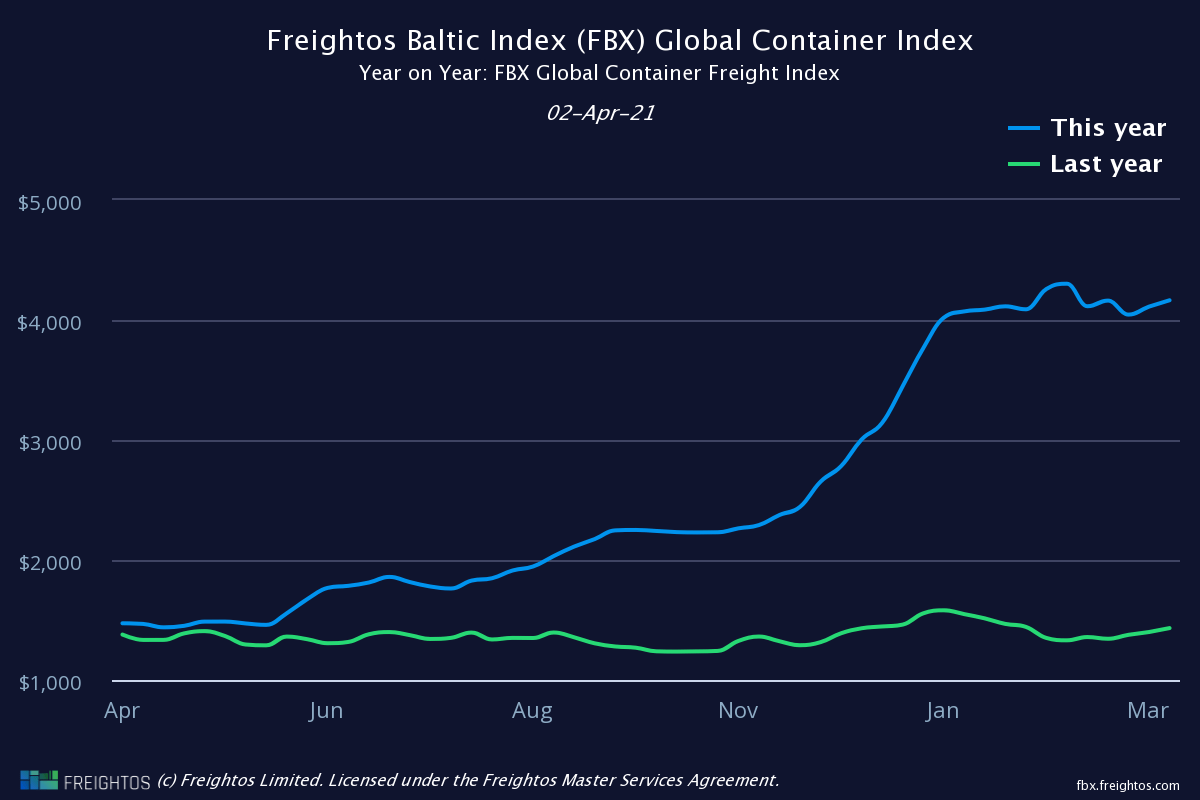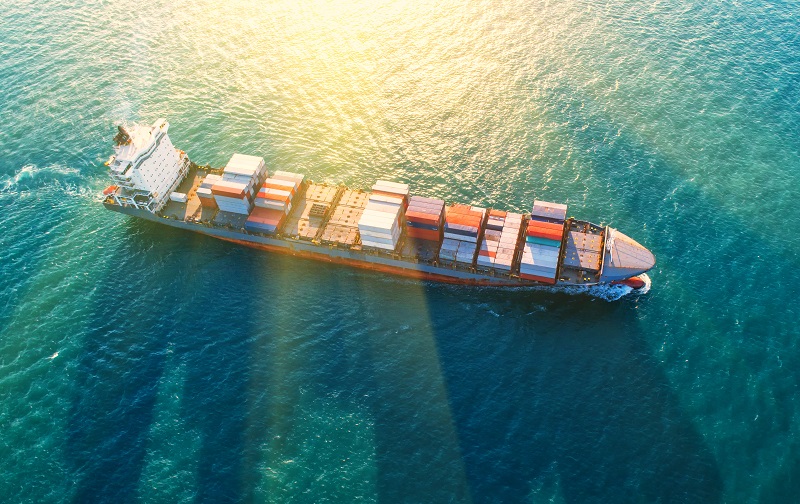‘New Normal’ Consequences: Soaring Container Shipping Rates
Just a couple of months out from the Suez Canal blockage, companies are still trying to get a handle on reacting to the aftermath while bracing for further impact. The temporary logjam created a domino effect of disruptions, battering an already strained supply chain.
If your container was affected because of this, you might be evaluating your options. One of the factors in that evaluation would also be the freight costs you incurred for that container and any additional costs if you are expediting another shipment. If you were to check the freight invoice, you probably paid four times the cost of the container as compared to last year!
Peaking Rates
At the start of the COVID-19 pandemic, most liners were running empty with schedules cancelled or delayed and in turn we saw reduced freight costs. However, the pandemic kicked off a huge demand surge for goods over services and created unprecedented demand. This led to something very logical but not anticipated — shortage of containers! Rising demand in North America and Europe led to increased freight moving on the Suez and Pacific routes, which meant more full containers inbound versus outbound, leading to global container shortages.
A little over a year later, the FREIGHTOS Index (YoY) shows a highly uncommon trend in freight costs with costs increasing four to five times on some lanes.

In fact, the BBC reported one retailer paying £10,000 compared to £1,600 in the span of three months. Another clothing supplier reported being charged $14,000 for a container which used to cost $2,500. This leaves businesses grappling with reducing margins or passing on costs to customers.
New Reality
The ongoing shortage of containers spells trouble especially for small and start-up businesses. While manufacturers aren’t quite ready to share the burden of increased freight costs, they will have to pass on some costs to consumers. However, the reality is that many businesses can’t increase prices in the same proportion so ultimately it will hit their bottom lines and might render them out of business. Bearing the brunt is a tad easier for larger and more resilient supply chains, with built in buffers to absorb costs and mitigating the risks of variable supply by using different techniques. No matter the size, everyone is looking to technology to help them outlast these tough times.
Technology to the Rescue
There are many levers that can be used to mitigate against some of these disruptions. Supply chains are interconnected but often operate in siloes. If logistics is aware of future flow of goods, then they can estimate container needs in advance and book containers on time to avoid going to the SPOT market. Organizations can leverage technology now that converts future supply, production and sales plans into logistics capacity to evaluate their future needs.
In the digital era, you can book freight through digital brokers reducing the need for contracted capacity. However, in these conditions, companies having pre-contracted capacities are realizing unanticipated benefits. A good logistics procurement solution can help customers navigate through these challenges by balancing contracted capacity versus SPOT/digital freight brokerage.
Historically, inventory was always to blame for higher holding costs and led to companies wanting to run a lean supply chain. But in these times of supply variability and higher costs, having extra inventory is actually helping to mitigate these challenges. So, technology can provide an agile recommendation from moving from one strategy to another.
Longer term, companies are already re-assessing their supply lines. Some are evaluating higher costs of goods but with lower transportation costs and lower lead times to offset these variabilities. Technology can help by providing the needed insights into high-risk supply lanes and also provide suggestions to de-risk by looking at multi-supplier strategy to switch from one to another.
There will be no shortages of logistics reverberations throughout 2021. As we think about the checks and balances needed to make supply chains more resilient, while balancing the constraints, we must pin our hopes on making the best use of technology to navigate our way through.

